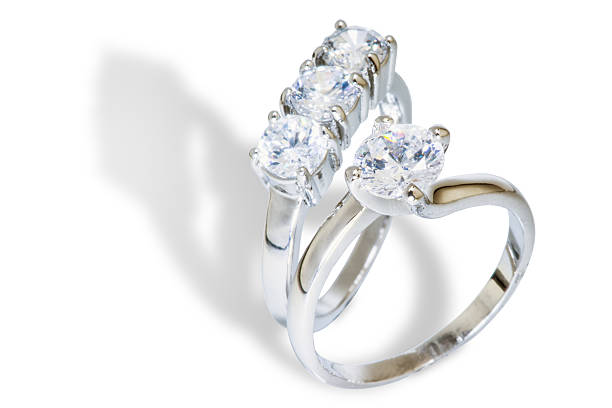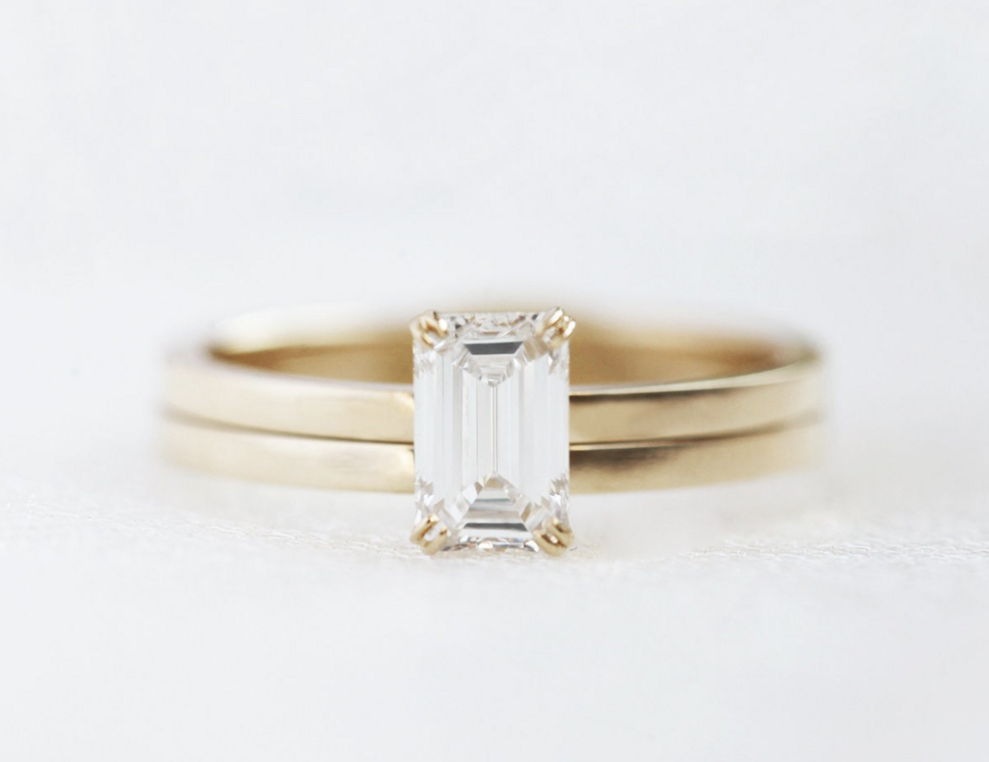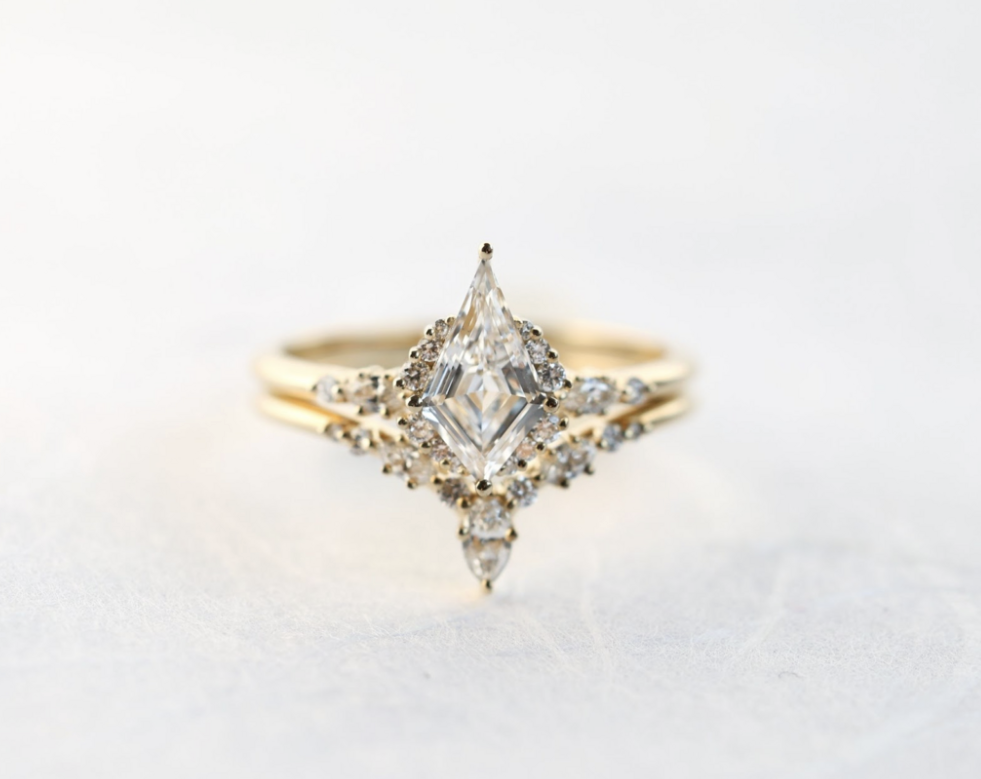A diamond ring set gives you two rings that work as one. The engagement ring leads. The wedding band completes the look and fit. When the pair is designed together, the stack sits close, feels balanced, and looks calm from every angle. This guide explains what a diamond ring set includes, why it helps, and how to choose one that fits real life.
What is in a diamond ring set
A diamond ring set is a matched pair made to be worn together. It includes a diamond engagement ring and a coordinating wedding band. Some people call this a bridal set. A wedding set often means three rings. That is the engagement ring plus two wedding bands.
There are two main styles. A matching set uses a straight band that sits flush beside the engagement ring. A nesting set uses a shaped band that curves around the center. Both can be beautiful when the scale, height, and details line up.
Reason to pick a set
A set solves fit from the start. The rings meet neatly with no awkward gap, so they snag less and feel like one piece. A set also gives a clean design story. Metal color, finish, and small features match across both rings. You often save money, too. Buying the pair together can cost less than custom-fitting a band later. On the hand, a set protects delicate spots. A V at the tip of a pear or a slim bezel on corners can guard against bumps during daily wear.
Natural diamond or a lab-grown diamond
You can choose a natural diamond or a lab-grown diamond. Both are real diamonds with the same crystal structure and hardness. When cut well, both can look bright and lively. Put cut first. Cut controls brightness, contrast, and fire. A lively diamond will look good in soft indoor light and in daylight. Then set a size goal and balance color and clarity. Many people like the G to H color for a bright look. VS2 or SI1 clarity can be eye-clean in many shapes. Always ask for a grading report from GIA or IGI. If possible, confirm the laser inscription on the diamond matches the report.
Natural diamond ring set
Formed in the earth over a very long time. Rarer by nature, which is reflected in price. The resale market is broader, so value tends to hold better compared to lab-grown. Traceability has improved. Ask for origin details, chain of custody, and any responsible mining standards. Natural diamonds can show a wide range of growth patterns and fluorescence. None of this is good or bad on its own. Judge the stone by how it looks to your eye and how it performs in different light.
Source: Capucinne.com
Lab-grown diamond ring set
Grown in controlled conditions using HPHT or CVD. HPHT uses high heat and pressure around a tiny seed. CVD grows diamond layer by layer in a chamber. Both methods produce real diamonds. Prices are often lower than natural for the same size and grade, so you can go larger or higher quality for the budget. Supply is steady, which makes it easier to find exact shapes, sizes, and matched pairs for a set. Expect the grading report to say “laboratory-grown.” Inclusions can look different from natural ones. Some HPHT stones show tiny metallic inclusions. Some CVD stones can show strain patterns.
Source: Capucinne.com
Shapes and how they change the look
Round looks classic and bright. It pairs well with a straight band for an easy flush fit. Oval spreads out across the finger, so it looks large for its carat. A thin pavé band gives a smooth line of light. Pear draws the eye to the tip and makes the finger look longer. A curved or V band fills the gap under the point and adds protection. Cushion has soft corners and a cozy glow. A fine halo around a cushion boosts presence without much height and works well with a straight or gently curved band. Emerald shows wide flashes and clear lines. Keep the setting low and pair with a simple band so the shape stays the focus.
Settings that work for daily life
Low settings feel safe and comfortable. A bezel wraps the edge and shields the diamond. Rounded prongs hold well without sharp corners. A slim halo can add brightness and help certain shapes meet a straight band. For pears and shapes with points, use a V at the tip or a partial bezel. Check the profile height. If the head is very tall, many bands will leave a gap. A lower head helps more bands sit flush.
Band styles that finish the story
A plain band keeps attention on the center. It also wears well and is easy to resize. Pavé adds a fine ribbon of sparkle. Stones around 1.1 to 1.5 millimeters look delicate and bright. Shared prong and U prong show more diamonds and feel airy. Channel-set diamonds feel sleek and snag-resistant. Decide between half eternity and full eternity. Half eternity puts sparkle where you see it most and allows easier resizing. Full eternity wraps light all the way around but is harder to resize later.
For nesting bands, look at soft curves, chevrons, and gentle V shapes. The contour should follow the engagement ring closely so the stack looks intentional. A curved band can protect tips, frame halos, and balance east-to-west settings. Try the set on together and watch how the outline looks when you open and close your hand.
Comfort and durability
Aim for band widths around 1.6 to 2.0 millimeters for strength without bulk. Keep profiles low so sleeves glide over the rings. Check for a flush fit. If there is a gap, choose a nesting band that fills it cleanly. If the stack spins, ask about small sizing beads inside the band or soldering the two rings later. These small steps can make daily wear easier and help the set feel solid.
A simple buying checklist
- Confirm a GIA or IGI report for the diamond and match the laser inscription.
- View the stone in daylight and warm indoor light. Look for even brightness and no dull zones.
- Try both rings on at the same time. Make a fist, reach into a pocket, and hold a steering wheel. Test real motions.
- Check if a straight band sits flush. If not, try a curve or V that follows the outline.
- Decide on plain, pavé, shared prong, channel, or eternity and confirm any resizing limits.
- Match the metal color and karat for both rings.
- Confirm warranty, resize range, rhodium replating for white gold, and cleaning or checkup policies.
- Ask for photos or a video of the exact set you will receive, not just a sample.
A diamond ring set should feel calm and natural from the first try on. Let the engagement ring set the story. Choose a band that either mirrors the lines for a flush match or hugs the shape for a sculpted nest. Keep the profile low, the fit secure, and the details consistent. If you want to compare shapes, metals, and band styles, explore curated sets at capucinne.com. Clear photos, precise specs, and many design paths will help you find a pair that looks right in every light and wears well for years.
Published by HOLR Magazine.




